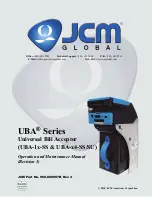
Glossary
310
TCP/IP
Transmission Control Protocol/Internet Protocol. A standard set
of protocols that govern the basic workings of the Internet. It
was developed by DARPA and implemented in 1982. TCP/IP
encompasses both network layer and transport layer protocols
(in the OSI model). While TCP and IP specify two protocols at
specific protocol layers, TCP/IP is often used to refer to the
entire DOD protocol suite based upon these, including Telnet,
FTP, UDP and RDP.
Telnet
Telnet is the login and terminal emulation program for
Transmission Control Protocol/Internet Protocol (TCP/IP)
networks such as the Internet. Its primary function is to allow
users to log into remote host systems.
Terminal emulation
Programs that allow a WBT to act like a particular brand or type
of terminal. The WBT thus appears as a terminal to the host
computer and accepts the same escape sequences for
functions such as cursor positioning and clearing the screen.
Thin-client
A low-cost computing device that works in a server-centric
computing model. Thin clients typically do not require
state-of-the-art, powerful processors and large amounts of RAM
and ROM because they access applications from a central
server or network. Thin clients can operate in a Server-based
Computing environment.
Timeout
A time interval within which certain operations must occur; for
example, the time allotment for the terminal to connect to a login
host. After the timeout, the process can either be repeated or
discontinued.
Total Cost of Ownership (TCO) A model that helps IT professionals understand and manage the
budgeted (direct) and unbudgeted (indirect) costs incurred for
acquiring, maintaining and using an application or a computing
system. TCO normally includes training, upgrades, and
administration as well as the purchase price. Lowering TCO
through single-point control is a key benefit of Server-based
Computing.
Touch screen
A type of display screen that has a touch-sensitive transparent
panel that can sense when someone is touching it, and is able
to furnish a computer with precise information as to exactly
where on the screen the touch occurred. Touch screens are
used with software that uses the information provided by the
screen touch to respond to user requests.
Summary of Contents for Winterm 3200LE
Page 1: ...Winterm 3000 Series Windows based Terminal Administrators Guide ...
Page 2: ......
Page 4: ......
Page 32: ...xxx ...
Page 34: ...2 ...
Page 38: ...6 Terminal Installation ...
Page 73: ...41 Figure 5 4 3720SE Recall Mode R G B 9300 K 1 2 3 R G B USER 1 1 2 3 RECALL 9300K ...
Page 74: ...42 Terminal Installation ...
Page 76: ...44 ...
Page 102: ...70 Advanced User Interface Figure 9 1 Apps Properties Sheet SE Model Terminals ...
Page 116: ...84 Advanced User Interface ...
Page 118: ...86 ...
Page 122: ...90 Connection Configuration ...
Page 132: ...100 Connection Configuration ...
Page 156: ...124 Connection Configuration ...
Page 164: ...132 Connection Configuration ...
Page 172: ...140 Connection Configuration ...
Page 188: ...156 Connection Configuration ...
Page 190: ...158 ...
Page 196: ...164 External Devices ...
Page 206: ...174 External Devices ...
Page 217: ...185 Figure 26 2 Printers Properties Sheet ...
Page 220: ...188 External Devices ...
Page 232: ...200 ...
Page 238: ...206 Firmware Upgrades ...
Page 250: ...218 Firmware Upgrades ...
Page 256: ...224 Firmware Upgrades ...
Page 258: ...226 ...
Page 264: ...232 Security Properties ...
Page 272: ...240 Client Security ...
Page 286: ...254 ...
Page 294: ...262 Getting Help ...
Page 304: ...272 Getting Help ...
Page 306: ...274 Getting Help ...
Page 310: ...278 Getting Help ...
Page 344: ...Glossary 312 ...
Page 351: ...Index 319 ...











































